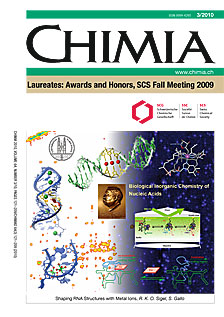The Potential of N-Heterocyclic Carbene Complexes as Components for Electronically Active Materials
DOI:
https://doi.org/10.2533/chimia.2010.184Keywords:
Electrochemistry, Functional materials, Molecular switches, N-heterocyclic carbenes, Organometallic polymersAbstract
The application of N-heterocyclic carbene complexes as active sites in materials other than catalysis has been remarkably scarce. Inspired by the – often misleading – 'carbene' label, which implies a substantial degree of M=C ? bonding, we have been interested in evaluating the potential of N-heterocyclic carbene complexes as building blocks for constructing electronically active materials. Electron mobility via the metal–carbon bond has been investigated in monometallic imidazol-2-ylidene complexes and subsequently expanded to polymetallic systems. In particular, ditopic benzobisimidazolium-derived ligands have been explored for the fabrication of bimetallic molecular switches and main-chain conjugated organometallic polymers. Electrochemical analyses have allowed the degree of electronic coupling between the metal sites to be quantified and the key parameters that govern the intermetallic communication to be identified.Downloads
Published
2010-03-31
Issue
Section
Scientific Articles
License
Copyright (c) 2010 Swiss Chemical Society

This work is licensed under a Creative Commons Attribution-NonCommercial 4.0 International License.
How to Cite
[1]
O. Schuster, L. Mercs, M. Albrecht, Chimia 2010, 64, 184, DOI: 10.2533/chimia.2010.184.







